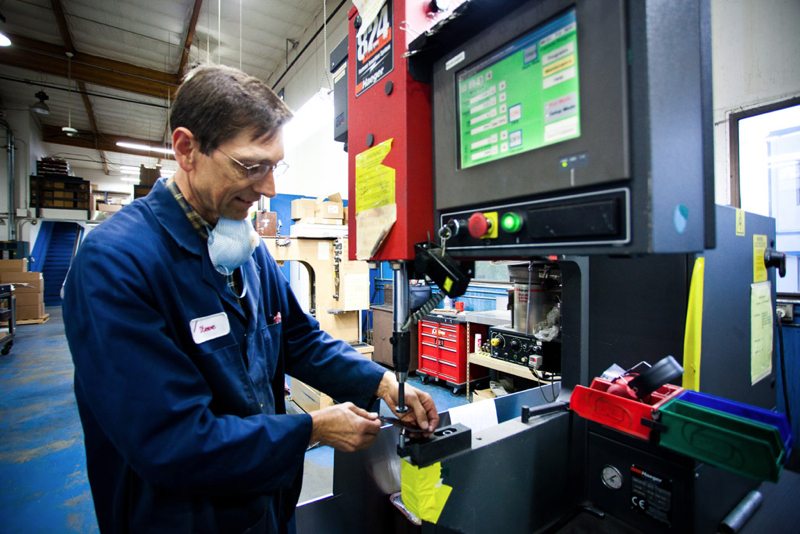2020 Trends in CNC Machining

In the U.S., custom manufacturing has fought to gain its place within the manufacturing sector. While the price of precision equipment has continued to decrease, the development of a skilled workforce capable of running such equipment has failed to keep pace.
For most shops, their workforce of machinists remains central to how they grew their business. However, with the advent of more global competition and lower prices, a strain has been placed on precision manufacturers to pay their skilled workforce competitively while still meeting customer expectations.
Despite these challenges, the market continues to expand and advanced manufacturing sits on the cups of a future renaissance. But meeting this rising challenge will require manufacturers to find ways of reducing costs while improving productivity. Such a lofty goal will require adopting new technologies that promise to change the industry as a whole.
Let’s take a look at some of the top trends currently anticipated to shape CNC machine shops in 2020 and throughout the rest of the decade.
Treating Machines as Platforms
Frequently in shops, the machine is simply viewed as a means to an end. A program is entered, a material gets fixed, tools cut per instruction, the finished product is then inspected, and the process repeats itself.
In actuality, a CNC machine works as a platform that can streamline each of these steps through both digital and physical integration. By treating modern machines as a platform instead, manufacturers can augment and upgrade individual features on both the software side – adding high levels of performance monitoring and customization – and through the physical side – integrated tool measurement.
The following trends we’ll take a look at in this post are designed to enhance CNC milling by reducing steps, saving time, and occasionally catching an error before the end user.
CAM as a Machine’s Digital Twin
CAM software systems, such as MasterCam, are used to program the creation of a part using a 3D computer design model as part of a setup that occurs virtually. Toolsets are put into place, and each individual machine operation is simulated and programmed. Determining the path of a machine tool often comes down to defining the machine parameters and orientation before letting the software determine an optimized sequence. However, new tool pathing software can offer manufacturers the ability to mitigate wear while also decreasing cutting times.
In recent years, CAM software has improved to incorporate standard features like advanced collision detection. Previously, this type of software could be prohibitively expensive for shops to license as independent add-on features. With multi-axis machines becoming commonplace, collision risk also increases. Better CAM software now reduces this risk, while also improving the machining of parts, by utilizing simulations to determine collision risk. These types of CAM advancements are effectively taking years’ worth of training and building this knowledge into the software itself.
Workforce as Trained by Machines
A number of equipment manufacturers have started to install 3D CAD viewers and even some CAD/CAM packages as part of their machine platforms. As a machine controller’s screen has increased in size, they have become both the primary interface and a visual guide for operation progression and setups. To address potential errors that occur during machining, some manufacturers have even pre-installed troubleshooting videos that an operator can instantly access.
With the integration of intelligent CAM software and other tools within the equipment used by a workforce on a daily basis, precision manufacturers can help to improve workforce training and any development challenge that occurs naturally as part of day-to-day operations. While this type of equipment may carry a higher initial cost, this increase is often offset by the savings manufacturers realize through reducing operator error.
More Axes to Reduce Machining Cost
In addition to CAM/CAD integrations, improvements have also been made to machining equipment and hardware, making them both more affordable and capable than ever before. Multi-axis machining centers have now entered the competitive marketplace, enabling shops to use more advanced machines at a lower price. These types of machines can be either dedicated, with rotary axis pre-installed, or upgraded using interchangeable trunnions or rotary tables. Automated tool changers can also come as an upgrade, with an increase in the count of tool holders that allows for more operations with less initial setup.
The benefit shops get by adding axes to a machining center is a reduction in the number of overall setups. For each individual setup, custom fixturing may necessitate more materials and operations. By cutting back on each setup, labor is automatically decreased. This in turn reduces both risk and cost as tracked by the number of steps per operation which could potentially involve operator error.
These are just a few of the ways our team at API/AMS can see the future of precision manufacturing heading. Check back with your blog next month as we continue to look forward at the future of precision machining.
